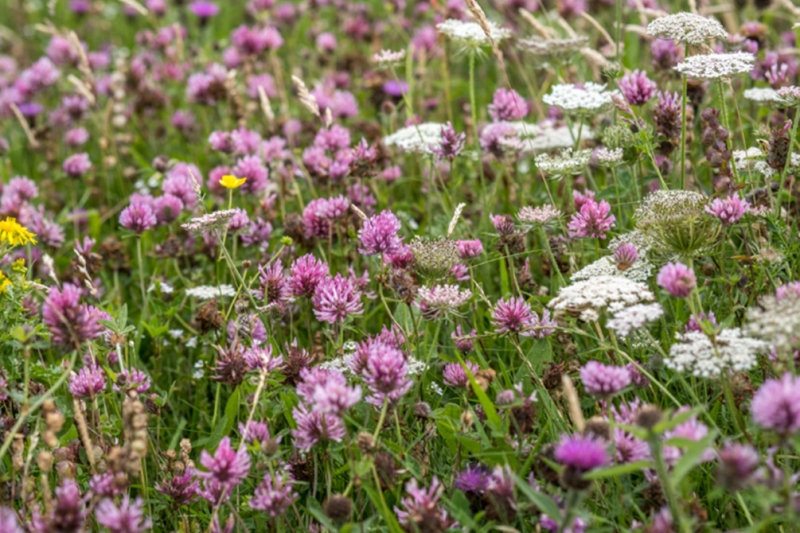The Great Yellow Bumblebee
Action Points
Great Yellow Bumblebees are large yellow bees identified by their yellow or yellowish-brown colouring with a distinct band of black hairs between the wings.
- Encourage and maintain large areas of flower rich meadows where the bees occur.
- Manage by grazing cattle during the winter months, keeping the areas stock free during the summer months is essential.
Habitat Requirements
The Great Yellow Bumblebee requires areas of abundant wild flowers such as species rich grasslands or machair to survive. The current distribution reflects the distribution of the remaining flower-rich machair and locations where traditional low intensive agriculture is still maintained.
Early food supply is thought to be a key limiting resource for queen bees as they emerge from hibernation in June to establish new colonies. They will often favour Kidney vetch in the spring and other species such as red clover and vetches throughout the summer.
Great yellow bumblebees have three main requirements. They need:
- A continuous supply of flowers from May to September, red clover, vetches and knapweed
- A suitable nest site
- A suitable place for queens to hibernate

Management Requirements
To maintain these flower rich grasslands and machair, grazing by livestock is required. Grazing by cattle in particular during the winter months followed by a livestock free summer is the best for wildflowers and the insects that depend on them. This grazing system controls the grasses by grazing them back during the winter but allows the flowering plants to flower and set seed during the summer undisturbed.
Life Cycle
The Great Yellow Bumblebee emerges late compared to other bees with queens usually seen from mid-June. They must feed on nectar straight away to give them the energy to begin the year. The queens search for a suitable nest site and collect pollen to provide for their developing young. They will use old mouse burrows, rabbit burrows and other holes under grass tussocks as nest sites.
Great Yellow queens produce small colonies, with only 20-50 workers. The workers collect nectar and pollen to support the nest. The queen will switch from producing workers to rearing males and daughter queens in late July. Males emerge from the nest in early August and daughter queens are seen from mid-August. After mating, daughter queens find suitable hibernation sites in burrows in soil or sand dunes. They will not emerge again until June the following year. The old queen, workers and male Great Yellow bumblebees die in September.

Machair
Great Yellow Bumblebees love flower rich Machair.
Machair is a Gaelic word for the herb-rich land lying inland of coastal fore-dunes. It is the result of centuries of wind-blown sand, seaweed and grazing by livestock.
Key Messages
Graze by cattle during the winter without poaching the ground
Leave stock free during the summer to allow the production of flowers to support bees
Do not use fertilisers, herbicides or pesticides
Related FAS Resources
Sign up to the FAS newsletter
Receive updates on news, events and publications from Scotland’s Farm Advisory Service
